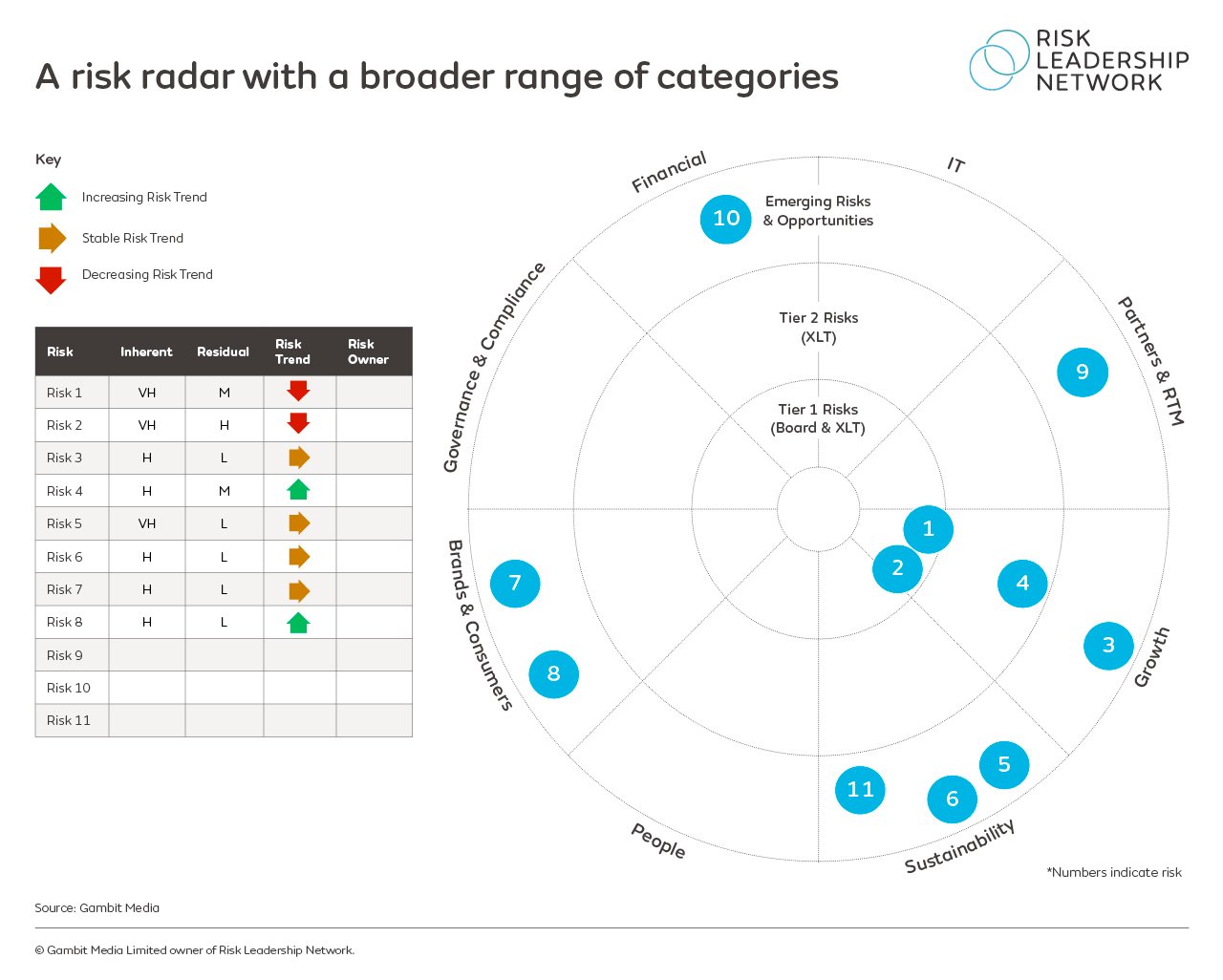If COVID-19 has taught us anything it’s to keep your finger on the pulse of high-impact emerging risks. That’s why many risk leaders have and will continue to provide horizon scan updates in regular executive risk and board reports.
So how are they doing this?
Based on insights we have pulled from risk leaders with Risk Leadership Network membership, here are a few key tips for you to consider: can these be implemented at your organisation?
1. Conduct and review risk surveys
Home in on emerging risks that could be material to your business, rather than those that are still very distant.
Conducting and reviewing recent risk surveys will provide vital intel on the business’ major concerns, including issues over the horizon. Each can be developed with risk owners and department heads for the relevant areas of the business.
It is worth keeping detail to a minimum at this stage of reporting to the board. Focus on what risks are currently being monitored versus the risks that will be monitored in 6 to 12 months’ time.
|
To read more on emerging risk, take a look at our guide:
Emerging Risks: How are businesses managing their blind spots?
Read the feature article>>
|
2. Remember emerging risks will likely become principal risks
Encourage the board to acknowledge the difference between emerging and principal risks. Here’s how one member put it:
“Emerging risks are for monitoring and understanding. Principal risks are for managing. Emerging risks are not really risks you can manage. It’s more about understanding and monitoring those risks in terms of how it impacts your business and monitoring the signals that are going to inform your understanding of how that risk is emerging.”
That being said, keep your finger on the pulse, as an emerging risk could quickly become a principal risk or, at the very least, could feed into an existing principal risk.
3. Cluster emerging risk into themes
One member categorises their emerging risks into four or five key themes. For example, how geopolitical tensions could impact supply chains. These are then linked back to why the risk is important to the business and, crucially, who’s going to monitor it.
It is far easier to then align initial actions. For example, the procurement department could then create a supply chain model to determine the extent to which they rely on tier 1, 2, and 3 suppliers and report back with various options and next steps.
The key point is to look at the big macro themes and consider their impact on the micro environment.
4. Create visuals of your emerging risks
One member suggested creating a risk radar of its emerging risks.

They found the radar was useful in displaying short- to long-term risks. It provides a timeline to show where each risk might sit in a business planning cycle, and even beyond.
Free report: Using risk radars to identify blind spots and emerging risks
Would you benefit from collaborating on emerging risk with other top risk leaders?
Risk Leadership Network holds regular meetings on emerging risk enabling risk leaders to share their experiences and practical advice. We also publish relevant case studies, tools and templates for our members. We believe that collaboration is the best way to meet the growing challenges faced by in-house risk leaders.
For more insight gathered from our network, read our guide to emerging risk. Find out about all the other ways we can save you time and elevate your management of emerging risk with membership to our network.

|